Proper care and maintenance of mobility aids are crucial in ensuring that they are in perfect condition. Also, mobility aids are pretty costly and therefore need to be well taken care of for them to last long.
Unfortunately, a lot of users are ignorant of the recommended maintenance practices highlighted in the manuals. Let’s be honest, no one reads manuals.
This is why we found it important to highlight them here in a simple and easy-to-comprehend article.
Why Regular And Proper Maintenance of Mobility Aids Is Crucial
As we mentioned, a lot of people tend to overlook a service routine or regular maintenance like cleaning or removing water from a mobility device until it’s too late.

Let’s find out why you should keep up regular maintenance.
Reliability
Electric wheelchairs and mobility scooters maintenance is mandatory to ensure these devices work efficiently and that they serve you well as intended.
Regular maintenance also makes it easy for you to spot a problem.
You don’t want to wake up to a broken scooter or wheelchair. If you need to take your mobility device in for maintenance, it can take several days and even weeks before they are fixed leaving you stranded.
Cost-Effectiveness
This is obvious. A well-cared-for and maintained scooter or wheelchair will save you from unnecessary expenditures. Yes, service costs money, but it is much cheaper as compared to repairing a broken device or purchasing a new one.
Safety
Maintenance also enhances safety. Defective power wheelchairs and mobility scooters can cause various injuries. For instance, an overheated motor can cause severe burn injuries. Most of these problems can be spotted early enough before they escalate to being hazardous.
How Do You Maintain An Electric Wheelchair?
Now that you are all caught up on a good maintenance routine, let’s look at the easy and most basic ways to look after a motorized wheelchair.
You can do most of these tasks, however, there are some that you will need to call for a wheelchair maintenance expert.
Cleaning Your Wheelchairs
It is important to always clean the exposed parts of a power wheelchair. Failure to do so will lead to an unanticipated wheelchair breakdown over time.
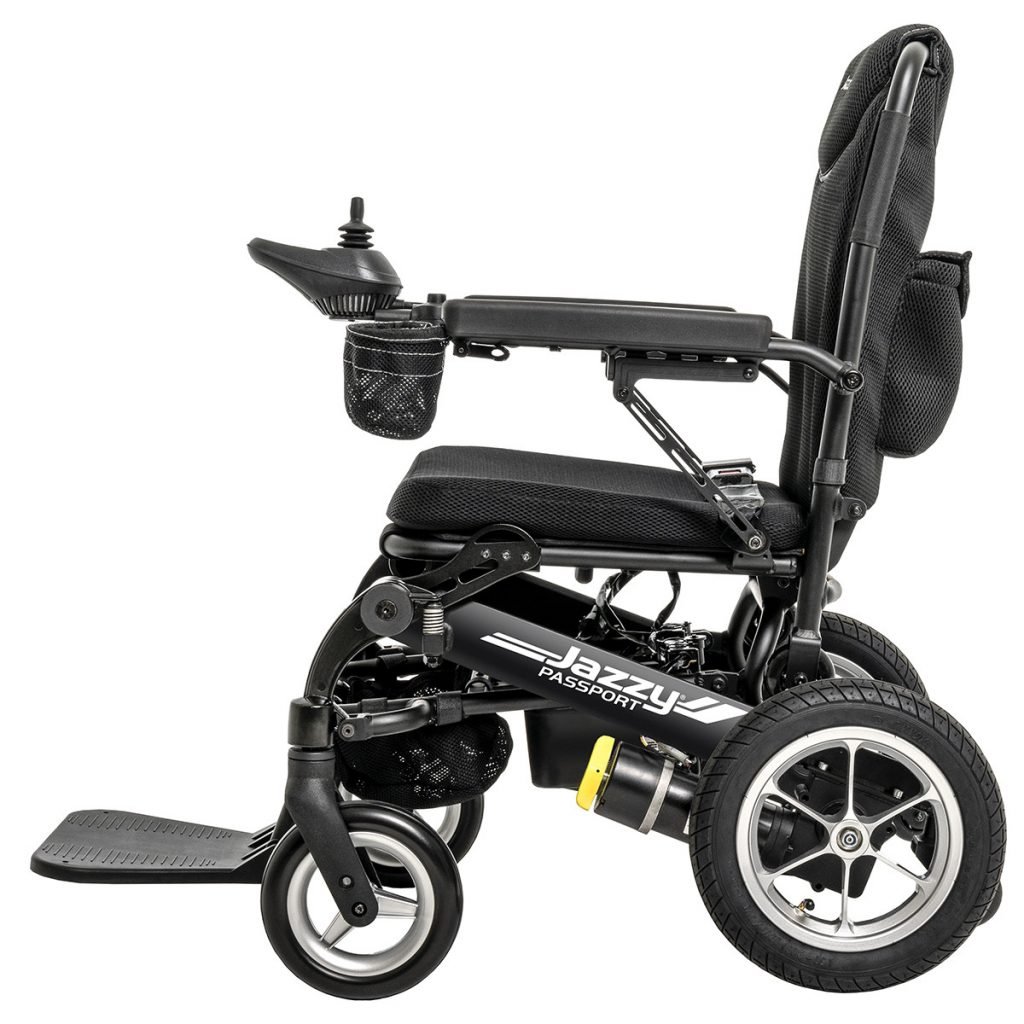
- To clean your electric wheelchair, you’ll need a bucket of warm soapy water and a soft piece of cloth. A spray cleaner also works.
- Dampen the piece of clothing in water and use it to wipe the frame and seat of your wheelchair. It is not recommended to use strong chemicals or lubricants on these devices because they might affect their functionality.
- Follow up with a dry piece of cloth or towel to dry the parts, otherwise, moisture might get to the batteries and other electrical components causing corrosion or serious defects.
You should clean your wheelchair and disinfect it every time you leave your house with it. Public places can be so full of dirt and germs.
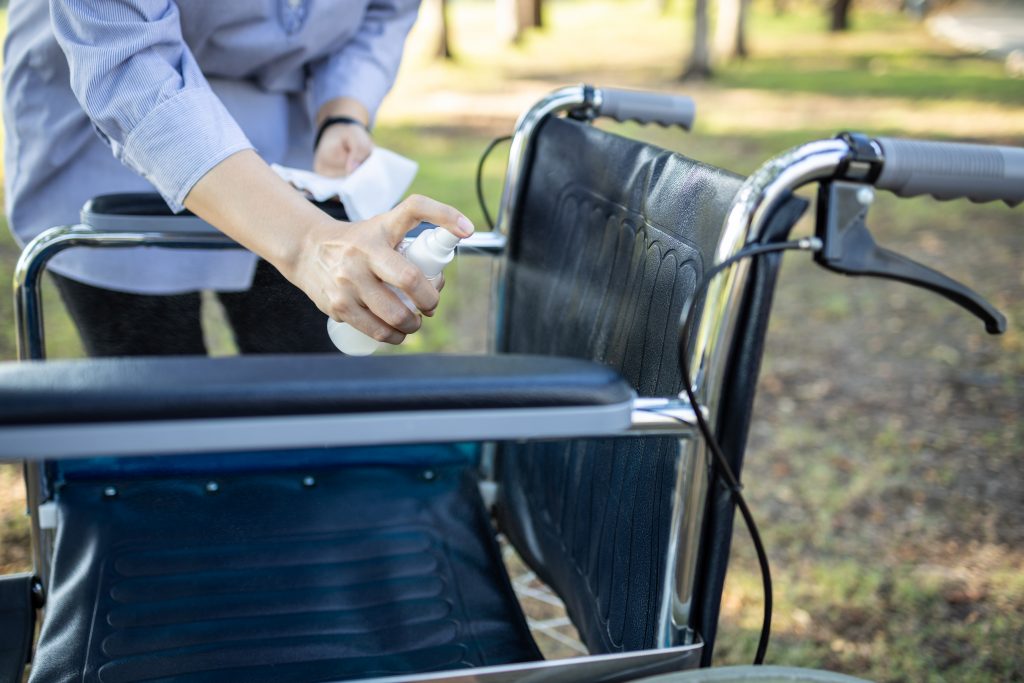
Tire Servicing
Tires are an essential element of wheelchairs. This is why it’s important to check your tires and wheels to ensure that they are working optimally. This will go a long way in preventing unfortunate incidents.

Read your manual or contact your manufacturer if unsure of how to go about servicing your tire but ideally you want to keep them clean at all times. Regularly check the treads and if they look worn out, it’s time to invest in new tires. A quick way to tell that your tires need to be looked at is when you feel more resistance than usual when self-propelling or general difficulty when accelerating your wheelchair.
The best thing about motorized wheelchairs is that they have tubeless tires which rarely become deflated so you don’t have to keep checking for pressure levels. A tubeless tire can run on low pressure and it hardly gets punctures caused by tube pinching.
Charging The Batteries
Every user should learn how to retain peak-battery performance with their wheelchair despite batteries losing their power to hold a charge over time. To key to this is ensuring that your batteries are charged often and properly. For instance, charging a new smart chair to its full capacity the first time.
It is advisable to charge your wheelchair batteries even if you haven’t used the device for a prolonged period. And if you use your smart chair daily, you should charge it overnight.
When choosing the best electric wheelchair for your needs, always check the battery type and capacity to know how long it can keep a charge and how much distance the battery can cover before needing to be recharged.
Lubricating Moving Parts
Another effective way of minimizing wheelchair-related accidents is lubricating all moving parts of the wheelchair. Some electric wheelchairs rely on lubrication to work effectively; a lack of lubricants might lead to friction, which causes recurrent wear and tears.
It would help if you used silicone-based lubricant spray to grease the moving parts of your smart chair instead of the petroleum-based oils. The silicone lubricant will also protect your wheelchair from grime and dust.
Repairing Damaged/Exhausted Parts
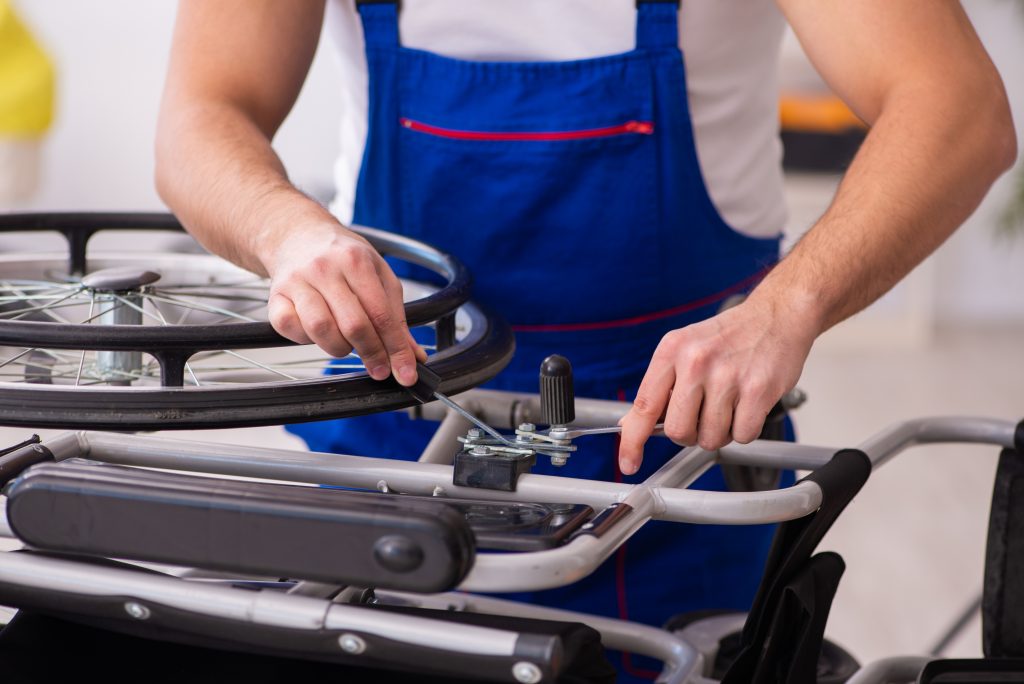
Hire a wheelchair maintenance expert immediately if you notice any damage to your wheelchair or if you notice that some parts have become worn out. Frequent checkups and repairs enhance the lifespan of a mobility device. No one wants to spend more money than they should.
The components that need to be checked consistently are nuts, bolts, motor, frames, caster, wheels, cables, and brakes.
At times, you can easily notice if your wheelchair has a glitch: for instance, a squeaky wheelchair indicates that there are some loose screws and nuts.
Refrain from putting heavy stuff on your chair to minimize damage. Remember, all wheelchairs have a specific weight capacity so take care not to overload yours.
Keeping Your Wheelchair Dry
Never use a power wheelchair in the rain because most units are not designed to withstand moisture. As much as some manufacturers say it’s safe to use an electric chair in the rain, we advise against it because water can cause extensive damage to the electronic components and the batteries.
If it starts raining when you are outside; cover your joystick and get yourself to a dry place as soon as possible. Alternatively, you can install a waterproof cover on your chair to shield the exposed electrical components.
Reading The User Manual
Sometimes all you need to do is read the user manual because nearly everything about how to care for and maintain your wheelchair is in there. We’ve given you the general maintenance tips but we strongly advise that you follow what the manual says, especially when it comes to replacing some parts.
For instance, whereas some wheelchairs can be cleaned with normal water, other power wheelchairs will need distilled water and rubbing alcohol.
Some manufacturers may warn users not to overfill the battery to prevent the leaking of battery acid.
The bottom line: familiarize yourself with the instructions inside your user manual, so you know the best ways to look after your device.
Electric Wheelchair Maintenance Checklist
Wheelchair Part | Maintenance Task |
| Cleaning | Wipe with soapy water then wipe dry with a cloth |
| Moving parts | Lubricate with silicon-based grease every 30 days |
| Brake | Inspect brakes daily |
| Motor | Inspect motor daily to check for awkward or excessive noise |
| Frame | Check for weld points, fractures, holes, cracks and bends every month |
| Nuts and Bolts | Check for loose bolts and nuts weekly |
| Casters | Check for bulges, wear, cracks, and wobbling Check that the stem housing is properly aligned |
| Armrests | Check for loose arm and misalignment |
| Seat Cushion | Check for tear, flaking and dirt |
| Back support | Check for proper attachment, loose parts and worn-out fabric |
| Footrest | Look for bulges, loose bolts, pins and bushings |
| Anti-tip Wheels | Check for loose wheels, cracks and wear |
| Safety belt | Check buckles, strap and velcro |
| Storage | Store in a dry place |
| Service | Every 12 to 24 months |
How Do You Maintain Mobility Scooters?
As we share the maintenance tips for mobility scooters, keep in mind that each scooter is different, so relying on your manufacturer’s recommended maintenance routine is key.
Cleaning The Equipment
Always keep your mobility scooter clean. Scooters used outdoors can easily get covered in dirt and other debris, which may hinder them from running smoothly.
The best way to clean your scooter is to dampen a piece of microfiber cloth in a mixture of water and rubbing alcohol, then wipe the exterior parts of the scooter.
We suggest taking this time to also inspect the device: this way, it would be easy to take note of any defects that may need fixing.
Keeping The Mobility Scooter Dry
Like electric wheelchairs, mobility scooters get corroded when frequently exposed to water. Even the best travel scooters will eventually fail when exposed to water. It’s less a matter of quality and more about how you care for it.
Always dry your device thoroughly so that water does not get to the batteries and electrical components.
Similarly, avoid using your mobility device in wet environments. Get yourself a protective cover for your control panel. It will come in handy during the winter season.
Changing/Charging The Batteries
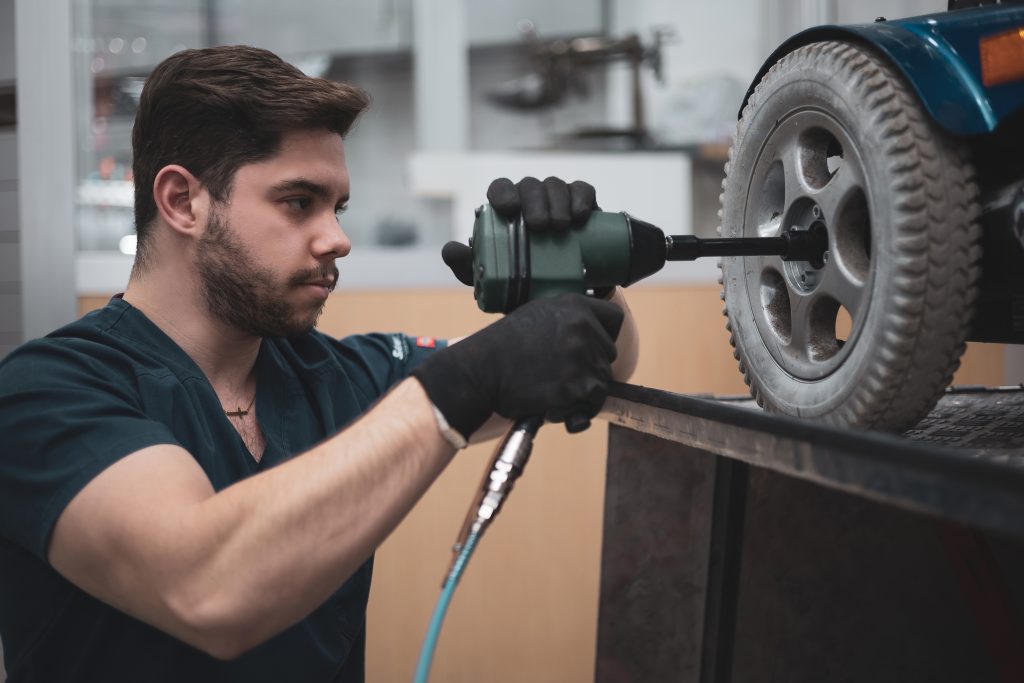
It’s pretty normal for a battery’s capacity to decrease over time. That is why you should regularly check your scooter battery indicator to know whether your battery charge can sustain you through the day.
Check your user’s manual to find out the recommended charging duration. Mobility scooter batteries are quite different: some may need to be changed frequently, whereas others can last a long period before needing a replacement.
The manual will also advise when and how often to change your batteries.
Checking The Tires
There are two types of mobility scooter tires: filled and pneumatic tires.
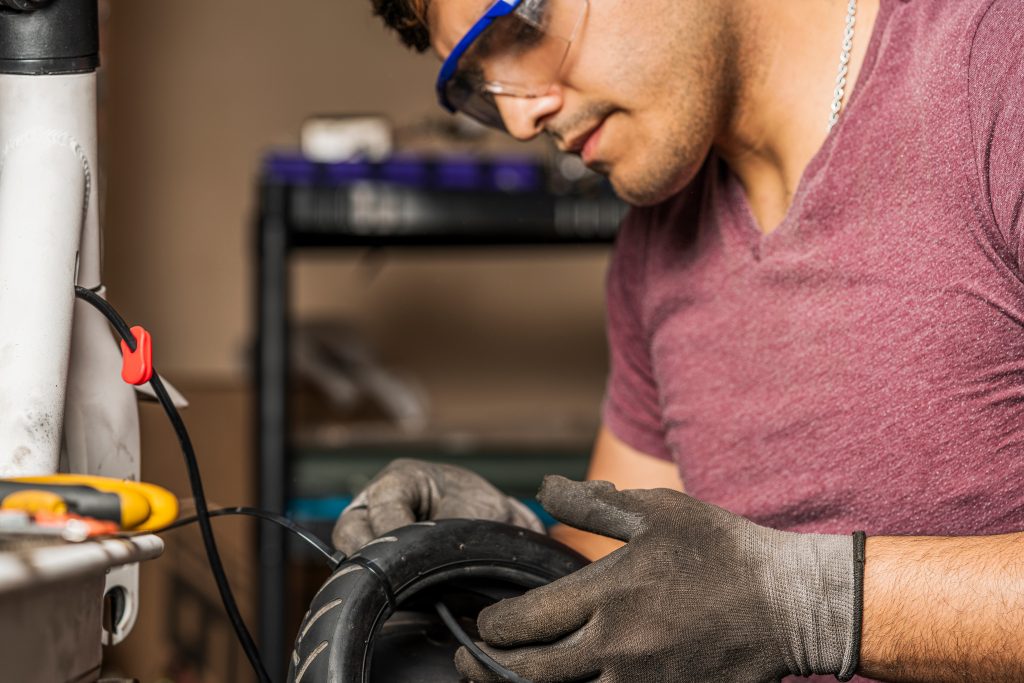
Pneumatic tires don’t need to be pressure-filled and they also don’t easily get punctured.
Air-filled tires require regular maintenance. Tires running on low pressure tend to wear out faster and also overwork the battery.
Remember to also check for tread depth and wheel bearings. If your wheel bearings fail, you can easily get stranded or worse, get injured.
Lubricating The Moving Parts
Just like other moving devices, a mobility scooter needs to be lubricated regularly for optimum performance. Avoid using too much lubricant.
Also do not mix lubricants: look for an excellent silicone-based lubricant and stick to it.
Storing The Mobility Scooter
Good storage also counts as maintenance. If you store your scooter in a dirty or wet environment, it may rust or corrode. Instead, store it in a cool, dry, and clean space.
Reading The Manual
Most people don’t read their user manuals, but it is essential that you do because it is the only way you will understand how your mobility scooter works. You’ll be surprised at how much you will learn about your scooter’s maintenance and troubleshooting.
Mobility Scooter Maintenance Checklist
Part | Scooters |
Cleaning | Wipe down with a damp cloth then wipe dry |
Battery | Check battery indicator everyday Charge regularly Keep battery dry Replace every 2-3 years Ensure battery sits flat in the battery well |
Moving parts | Lubricate with spray lubricant |
Tires | Check tire treads for wear and tear Check pressure levels |
Brake | Check brake pads for any wear |
Frame | Check for weld points, fractures, holes, cracks and bends every month |
Motor | Inspect motor daily to check for awkward or excessive noise |
Nuts and Bolts | Check for loose bolts and nuts |
Storage | Store in a cool/dry place |
Service | Every 12 months |
Final Thoughts
We hope that you’ve found these tips for maintaining your wheelchair and mobility scooter helpful. These are just the simple and basic ways to keep your mobility device in top shape.
We strongly advise that you go through your manual to find detailed and proper ways to care for your device. In case of repairs and complex replacements, feel free to contact your manufacturer for guidance or seek the services of maintenance experts.
Don’t forget to take your device once or twice a year, depending on usage, for professional servicing. The professionals at the service centres will carry out detailed diagnostics to make sure that everything is working as it should.
